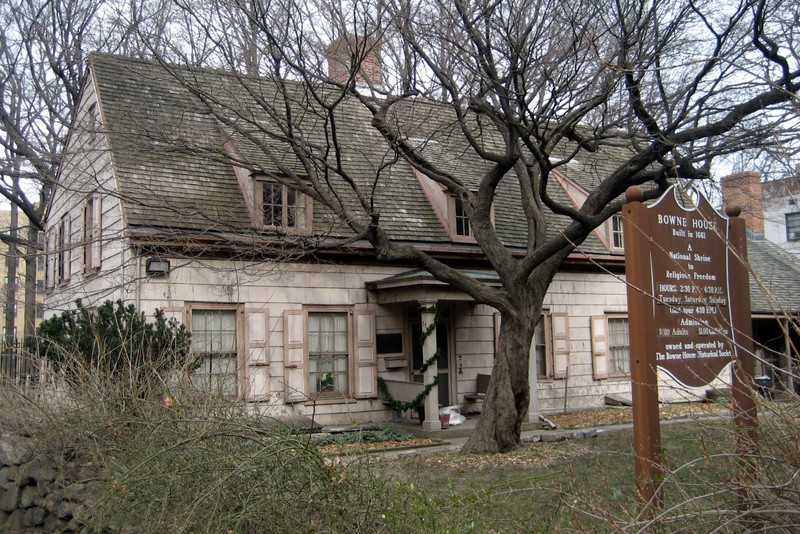John Bowne House
Introduction
Text-to-speech Audio
Images
The Bowne House

Backstory and Context
Text-to-speech Audio
The John Bowne House was named one of the best-preserved examples of Anglo-Dutch vernacular residential architecture in the United States. The original structure was first built around the year 1661 and has gone through a variety of expansions, two in 1669 and 1680 respectively by John Bowne himself. Each subsequent restoration was put forth by his family. The current state of the house was completed in 1695. The house is a mix of Dutch and English architecture styles making it extremely unique. Its original plans were based on other Dutch plans. However, English building techniques were primarily used.
John Bowne, the person to whom the house owes its name, was a known religious revolutionary in the United States. He played a direct role in the Flushing Remonstrance, which was a document signed by the various citizens of Flushing to combat Peter Stuyvesant’s religious bans. After the signing, many of the signers were arrested and the townspeople's Government of Flushing was disbanded. John Bowne openly defied the ban and aided the signers, known as Quakers, by allowing them to meet in his house. Bowne was soon arrested and banished to Holland where he fought for religious freedom against the Dutch West India Company. Peter Stuyvesant was soon forced to allow dissenting faiths to worship freely.
The original Quakers emerged from England during the mid-1600s as a response to the religious turmoil coming from the Protestant Reformation. The Quakers emphasized ideas of pacifism, equality, simplicity, and integrity. The Quakers received little support for their new religion, and many were jailed throughout the time period. The missionary efforts of some of the Quakers brought them to America in hopes of spreading the young religion. Because of this, many became affiliated with Pennsylvania politics and were soon dominating the Penn state government. Quakers also played a large role in the abolition of slavery and were the first group in history to completely abolish the practice. They also were important in World War II where they helped raise funds during the war. The Quakers of today have continued their past ideals and are often associated with relief efforts.
After more than 350 years, the old Bowne house still stands in the same location, and it serves as a reminder of the difficult colonial time in America. It represents the struggle that the Quakers experienced in helping to shape the new nation, and how John Bowne was able to help the cause.
Sources
"The Browne Family Biographies." The Browne House Historical Society. Accessed Web, 6/17/17. http://www.bownehouse.org/history_bowne_family.htm.
